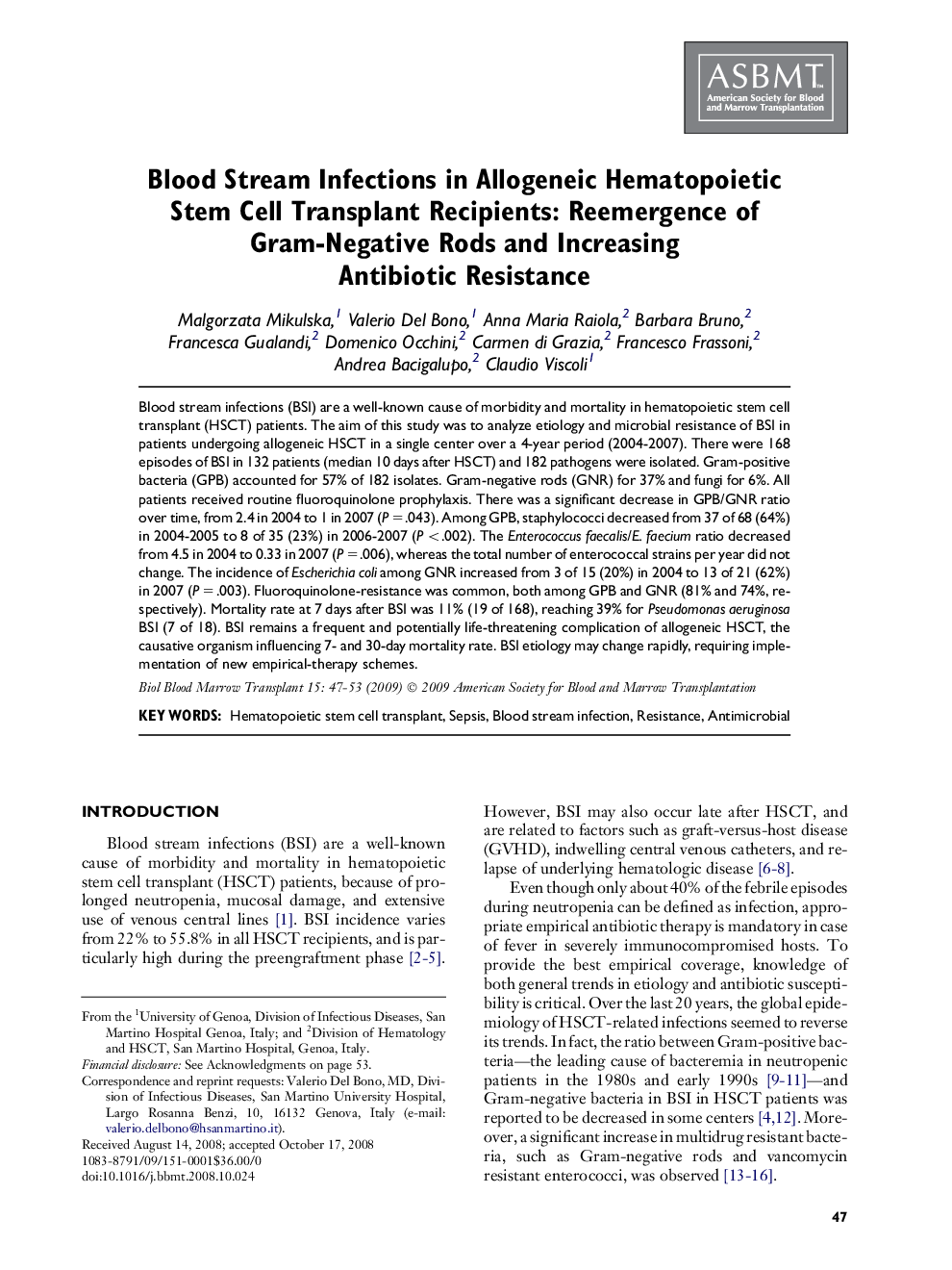| Article ID | Journal | Published Year | Pages | File Type |
|---|---|---|---|---|
| 2105727 | Biology of Blood and Marrow Transplantation | 2009 | 7 Pages |
Blood stream infections (BSI) are a well-known cause of morbidity and mortality in hematopoietic stem cell transplant (HSCT) patients. The aim of this study was to analyze etiology and microbial resistance of BSI in patients undergoing allogeneic HSCT in a single center over a 4-year period (2004-2007). There were 168 episodes of BSI in 132 patients (median 10 days after HSCT) and 182 pathogens were isolated. Gram-positive bacteria (GPB) accounted for 57% of 182 isolates. Gram-negative rods (GNR) for 37% and fungi for 6%. All patients received routine fluoroquinolone prophylaxis. There was a significant decrease in GPB/GNR ratio over time, from 2.4 in 2004 to 1 in 2007 (P = .043). Among GPB, staphylococci decreased from 37 of 68 (64%) in 2004-2005 to 8 of 35 (23%) in 2006-2007 (P < .002). The Enterococcus faecalis/E. faecium ratio decreased from 4.5 in 2004 to 0.33 in 2007 (P = .006), whereas the total number of enterococcal strains per year did not change. The incidence of Escherichia coli among GNR increased from 3 of 15 (20%) in 2004 to 13 of 21 (62%) in 2007 (P = .003). Fluoroquinolone-resistance was common, both among GPB and GNR (81% and 74%, respectively). Mortality rate at 7 days after BSI was 11% (19 of 168), reaching 39% for Pseudomonas aeruginosa BSI (7 of 18). BSI remains a frequent and potentially life-threatening complication of allogeneic HSCT, the causative organism influencing 7- and 30-day mortality rate. BSI etiology may change rapidly, requiring implementation of new empirical-therapy schemes.
